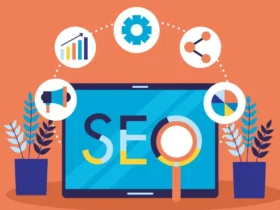The marketing mix is one of the most basic strategies used by marketing departments. The basic variables that the marketing manager must decide on during the execution of marketing activities are called marketing components or marketing mix. The variables that the marketing manager must decide on also constitute the marketing method functions. Marketing mixes are called 4P and 7P.
So, what is this marketing mix 7P?
We’ve compiled everything we need to know about 7P for you!
Just like the 4P, the 7P was developed by Philip Kotler. Unlike 4P, 3 concepts have been added in our 7P mix. Let’s see what this 7P is.
- Product – Product
- Price – Price
- Place – Distribution
- Promotion
- People – Human
- Physical Evidance – Physical facilities
- Process – Process
Now let’s go into detail about this 7P and examine the parts we need to pay attention to.
Product:
If we explain the product on a word-based basis; It means something useful produced, obtained from soil, plants, animals, seas and similar natural resources. From a marketing point of view: the substance in our product, the taste, shape, smell, mechanical properties, packaging, etc. of our product. features should be understood. Product refers to the products or services your business offers to your target audience. The product a company provides can vary significantly depending on the type of company and what they do. For example, McDonald’s provides consistent fast food, including burgers, fries, and chicken items, while Salesforce provides customer relationship management (CRM) software and marketing automation tools for businesses. If we want our marketing foundations to be solid, the features of our product,
Price:
An important criterion that we need to determine in the sale of a product is the value of that product. There are many factors in determining this price. One of them, of course, is production costs. In addition; While determining the price, the price ranges that consumers are willing to buy this product, pricing according to the target audience, and other prices in market competition are some of the important factors.
Place (Distribution):
The main purpose of distribution is to reach the customer at the right place and at the right time. In the condition that this is not provided, even if our product is as high quality, correctly priced and well advertised as they want, all these will have no meaning unless customers can access the product.
Promotion:
As we mentioned at the beginning, competition is increasing day by day. This increase means many competitors and many products for companies. If we promote our product through the right channels, we can make customers notice our product. If you ask what are these right channels; we can say that the channels will be selected based on our target audience. While we may be able to use some social media channels in a product we appeal to young people, the channel we will use for our target audience ‘the father whose child will just start school’ will be different. Staying in mind and always being visible will make the sale of our product inevitable.
People:
There are many human-based factors that play a role in service delivery and thus affect customers’ perceptions. If we give an example of these; We can say that the company’s staff, customers and other customers in the service environment. The chief thing we can say as the most important element of any service or experience is, of course, “human”. We see that many target audiences take the opinions of other customers as reference in product/service selection. As we see that it affects the purchasing choice, the importance of this factor is revealed.
Process:
It describes the process by which production or service takes place. It contains real procedures, mechanisms and flows. There are a number of perceptions of the concept of process in the business and marketing literature. Some see processes as a means to achieve a result, while others call it the whole production. Processes are about knowing what to do and how to do it, especially in service marketing. It sheds light on us to find answers to many questions such as “Do you work with your customers in an efficient, logical and friendly manner throughout their experience with your business?”
Physical Evidance:
Physics and possibilities are one of the “Seven Points of Marketing Mix” for service businesses, along with product, price, place, promotion, people and processes. Like others, it should not be considered in isolation, but should be seen as a supplement. Providing excellent physical facilities will help your business set the right tone and develop. As is known, the service does not have a physical feature. For this reason, the consumer tends to rely on material cues. So, whether we’re doing cliffside paragliding tours, running a small family hotel, or dealing with financial services, let’s take a look at our facilities or where and how your service is provided to your customers and see if our physical presence matches up.
While sometimes seen as outdated, we believe the 4Ps are an important strategy tool for selecting scopes and are particularly useful for small businesses. For startups reviewing price and revenue models today, using the Business Model Canvas for their marketing strategy is a great alternative as it gives you a good structure to follow. Companies can also use the 7Ps model for goal setting, SWOT analysis and competitive analysis.










Leave a Reply